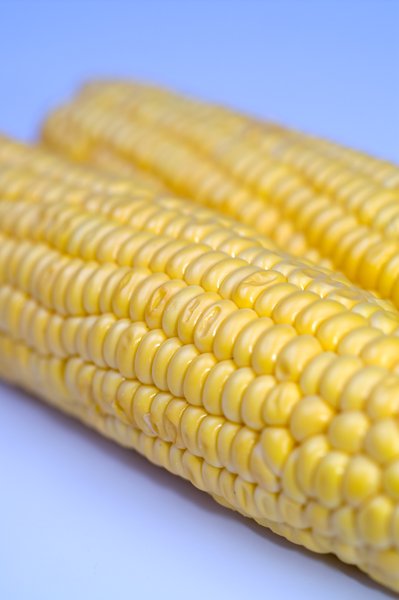Chad Esau was just 13 years old when his family moved from south Louisiana to Dumas, Arkansas. His parents had been raising peaches, but after watching them freeze for five consecutive winters, decided it was time to make a new start. Dumas offered everything they were looking for. The farming community had good land they could afford and solid irrigation was in place. The area also had a young Mennonite community with no pastor, and Chad’s father, Chester, happened to be a Mennonite pastor willing to relocate to pastor a young congregation.
After moving to the area, the small family found 20 acres to rent on which to grow produce for farmers markets. It was their experience at farmers markets that led them to realize there was a demand for good corn. “That’s why corn, I guess—there was a demand for it,” Chad says. Sweet corn is the corn we wait for all year long, and if you live in Arkansas, it’s quite possible you wait for Esau Corn specifically.
“My dad has always had an interest in growing produce for people,” Chad says, explaining that in addition to peaches, the family also had a blackberry patch in Louisiana prior to coming to Arkansas. Today, though Chad says his father is technically semi-retired, Chester still gets to the fields at 4 a.m. during harvest season—from around June 20th to the third week of July, a job he much prefers to the stressors of day-to-day operations. By the time the crew arrives at about 5 a.m., to begin loading corn to be sorting and bagging corn to be loaded into customers’ vehicles, “He’s already got a couple of loads ready,” Chad says. For that roughly one-month period, Esau employs between 20 and 22 temporary workers to help in the corn shed.
Every year during the harvest, the Dumas Chamber of Commerce puts on a special supper featuring Esau’s sweet corn, provided by Esau ready-to-boil for this special occasion. Adults eat for $10, children for $5, and toddlers eat for free. The menu features corn on the cob, corn nuggets, fried chicken, salad and tomatoes.
Though there is certainly a commercial demand for Esau’s excellent produce, Chad acknowledges that selling commercially comes with its own set of problems, including being subject to market fluctuations. For that reason, they sell primarily to consumers. “The fresh market is just more steady. If you provide a good product, the people will come,” he says.
SWEET, SWEET CORN
Esau Sweet Corn’s chosen variety is the Triple Sweet, which is non-GMO and consistently produces a crop to write home about—in fact, the ears are larger than many store-bought ears. But that’s not the only thing that makes Esau Corn so tasty. The growers only pick the corn when it is at peak ripeness, ensuring that each bag consumers receive is at its peak. In fact, their product is so popular, most customers place their order a few days or weeks ahead of when they’d like to pick it up to guarantee they can get all they want. A small selection of grocery stores around the state also order bags of corn to resell.
Orders can be picked up at the farm stand, where jellies, honey and a small selection of vegetables grown by Chad’s wife, Sherry, and his mother, Carol, are available. Chad’s aunt, Joyce, often works the farm stand, where her friendly telephone demeanor is appreciated by callers and visitors. “Lots of people come to the window here and ask, ‘Are you Joyce?’ They want to know who Aunt Joyce is,” he says with a laugh.
Chad’s brother, Weston, grows watermelons and cantaloupes nearby, which are also available at the farm stand. His children, ranging in ages from 17 to 4 years old, also work on the farm, as do his nieces. It’s truly a family effort.
Workers in the corn shed help bag corn, load it into customers’ vehicles and assist customers as they shop the small selection of produce and added-value goods available from the shed.
About that corn
Corn was first domesticated around 10,000 years ago from a wild grass that didn’t much resemble the corn we eat today. It became an important crop for Native Americans, and colonists also came to rely on it once they arrived in the New World.
Flint, or “Indian” corn has a hard outer shell and comes in a range of colors.
Field, or “dent,” corn, is most commonly grown to be ground into livestock feed.
And of course, sweet corn, our favorite, which can be eaten in a variety of ways: Raw. Grilled. Boiled. Steamed. Sautéed. Corn fritters. Corn Soufflé. Corn chowder. Cornbread. Popcorn. The list of goodness goes on.
